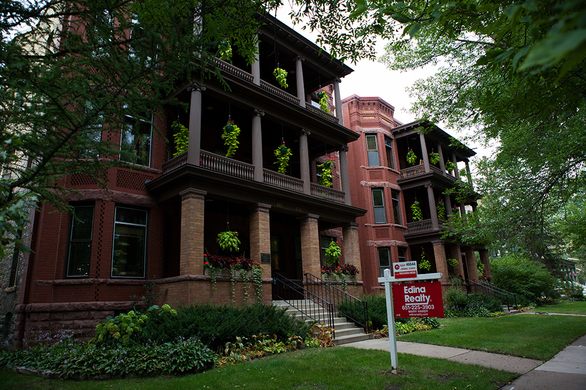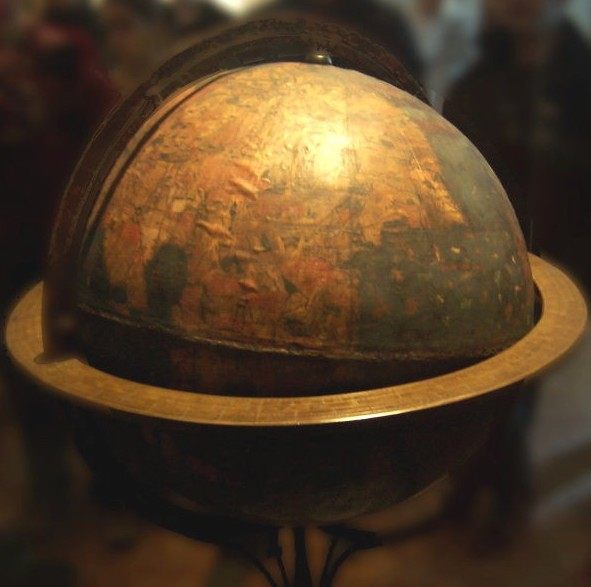
Ad Vice
First The Onion and now Vice. The digital media company is coming out of bankruptcy, launching a subscription service—and a print edition. Says Adweek:
The revival is the byproduct of a joint venture between Vice Media and Savage Ventures, which acquired the rights to Vice’s digital properties in May for an undisclosed price. Called Vice Digital Publishing, the joint venture includes the titles Vice, Munchies, Noisey, and Motherboard, as well as associated social media assets and video.
… The relaunch of the print magazine, which has been on hiatus since 2019, coincides with the 30th anniversary of Vice. Its first release, a photography issue, will feature the work of 20 up-and-coming photographers from across the world, according to general manager John Montoya.
Unlike in the past, the print magazine will not be paid for solely by advertising, but also by subscriptions. It will be quarterly and the second issue comes out in January. Subscriptions are available in two tiers: a $4/month tier provides access to exclusive digital content (much of Vice content will remain free), and a $10/month tier includes the printed magazine.
internal research found that fans of the brand considered the return of the print product a compelling incentive to subscribe. Likewise, Savage Ventures has seen success employing a similar strategy with other publishers in its portfolio, which includes niche titles like Drummerworld and The Tonic.
Let’s hope it works, which will bode well for other potential print publishers.
AI-Yi-Yi, Part the Infinity: Everyone’s a Critic
And so it begins. Yes, one of the big costs associated with a publication is content creation. How to remove those costs? Replace real writers with AI, of course. Some of us saw this coming the minute ChatGPT went live. However, via Gizmodo, London’s Evening Standard newspaper is going an even creepier route. Brian Sewell was a famous (or perhaps infamous) art critic for the paper. He died in 2015, but “he” will soon be writing again.
the newspaper has “resurrected” his byline and will resume publishing articles in his name. Unfortunately, instead of having a real human write the articles, they will be penned by an artificial intelligence program.
Apparently, according to a report from Deadline (haha), the AI art critic is apparently going to review a new Vincent van Gogh exhibition at The National Gallery. We have no idea how this is going to work.
It’s possible Standard editors earnestly (albeit inexplicably) think that readers will be interested in what a chatbot named after a dead art critic has to say about art installations. Maybe they think people will find it cute. I really have no idea.
Of course, it could just be a publicity stunt, but we have no doubt that more and more content will be AI-generated. —WTT AtWbot #826.
Signs of the Times, Part the Ongoing: Another Roadside Attraction
For some groups, billboards are a blight on the landscape, a kind of “road pollution.” But they don’t have to be. They can also be used for art projects. Steven Heller at Print magazine looks at a group called For Freedoms and a monograph they have produced called For Freedoms: Where Do We Go From Here? by Hank Willis Thomas, Eric Gottesman, Michelle Woo, Wyatt Gallery and Taylor Brock, which surveys the hundreds of billboards they’ve erected nationwide.
Featuring more than 550 artist billboards created between 2016 and 2023, it marks one of the largest public creative collaborations in American history. By appropriating an advertising medium normally used for political campaigning, these billboards showcase how art can urge communities into greater participation and action, and foster nuanced discourse.

This Side of Paradise
Or, at the very least, Saint Paul. Via Atlas Obscura, when in the Twin Cities, be sure to visit the birthplace of F. Scott Fitzgerald—among other Fitzgeraldian sites.
The multi-storied home at 481 Laurel Avenue in Saint Paul, Minnesota, is one of three sites in the city that is dedicated to the late, great author F. Scott Fitzgerald who penned such American literary classics as The Great Gatsby and This Side of Paradise.
In comparison to Summit Terrace, otherwise known as F. Scott Fitzgerald House, and the Fitzgerald’s other home in the city, his birthplace is a lovely, if low key landmark. The columned Victorian apartment was home to the infant Fitzgerald until he was two, being raised on the second floor where he had been born.
Naturally, later owners had no idea who he would grow up to be so there was no interest in preserving the site and it fell into disrepair. On the verge of being torn down, by the 1970s Fitzgerald had become suitably famous that a group of fans successfully lobbied to have the building restored. A new tenant, who had no idea of the apartment’s provenance, began getting strange visitors.
it was not long before fans of the author began to show up asking about the apartment. He began letting admirers into his condo to check out the birthplace, growing to enjoy the enthusiasm of the fans. He read the works of Fitzgerald and began picking up bits of info about the author that he would gladly share with anyone who dropped by.
A library group added a plaque to the building in 2004, and the building is now an unofficial historic landmark.

Making an Impact
Via Core77, 3D printing…with clay.
Researchers at ETH Zurich are developing an alternative to 3D printing with concrete. They've devised a system called impact printing, where an overhead robot rig fires chunks of a clay mixture straight down at the ground. It fires these chunks in a prearranged pattern, and as each chunk hits another, they bond. In this manner, structures are built up.
"Unlike concrete 3D printing, the process does not require any pauses during which the material can solidify," the researcher write. "A mixture of excavated materials, silt, and clay is currently used," though they add that "very minimal additives are required."
They say that entire houses can be 3D printed using this material which is “cheap, abundant, and sustainable as it does not require cement.”
Rock Me, Amadeus
Well, who would have thought that 2024 would bring us new Mozart music? No, he’s not still alive and came out of retirement, and, no, it’s mercifully not AI Mozart. Rather, a previously unknown piece of music by the Wolfgang Amadeus Mozart was recently discovered by researchers at the Leipzig Municipal Libraries. Says Gizmodo:
The recently uncovered manuscript is a copy, written around 1780, that the copyist attributed to a “Wolfgang Mozart.” The lack of Mozart’s middle name in the copyist’s signature suggests that Mozart wrote the piece before 1769, when he started to include the middle of his moniker, according to a Stiftung Mozarteum Salzburg release.
The piece is a 12-minute-long work in C major, written for two violins and a bass. It has been catalogued in Köchel, the catalogue of Mozart’s work, as KV 648, but is also dubbed “Ganz kleine Nachtmusik” and “Serenate ex C.” The piece consists of seven miniature movements. Based on the composition’s approximate timing, Mozart was between 10 and 13 years old when he wrote it.
Indeed, Mozartians point out that he would have stopped writing in that style by the time he was 17. Ah, don’t we all grow out of things by that age, like writing chamber music….
“We know from a list drawn up by Leopold Mozart that he wrote many other chamber works in his youth, all of them unfortunately lost,” said Leisinger. “It looks as if – thanks to a series of favourable circumstances – a complete string trio has survived in Leipzig. The source was evidently Mozart’s sister, and so it is tempting to think that she preserved the work as a memento of her brother.”
The uncovered piece was played in Mozart’s hometown of Salzburg last week and was performed in Germany at the Leipzig Opera. Check it out here.
All ’Round the World
What is the oldest globe of which we are aware? Well, via Atlas Obscura, surely not the first ever made but the oldest one we know of is called the Erdapfel, literally “Earth apple” or perhaps “potato,” dating from 1492. Despite what schoolkids are taught about Columbus, it’s been known for millennia that the Earth is a sphere and round depictions of the planet date back to Ancient Greece, while spherical maps of the world were created in the Islamic world in the 13th century or perhaps earlier. None of these, however, survive—or at least none have been found yet.
Also called the Behaim Globe, the construction of the Erdapfel is credited to the 15th century polymath Martin Behaim. Behaim, a German, was a well-known geographer, merchant, mariner, and philosopher. It was after his travels across the Known World, to places such as Portugal and the West Coast of Africa, that he returned to his native Nuremberg, where he convinced the city council of his hometown to commission a globe from him.
He wrangled a bunch of artisans to help complete the project. Constructing the basic form was the easy bit. The map itself was a bit more complicated.
The map art on the surface of the globe took a small team to complete. Foremost among them was the artist Georg Glockendon who, along with the painter Hans Storch, did the actual illustration work. Later, a scribe came in to add some 2,000 place names.
As for its accuracy, well…
He took his vision of the world from a number of sources, ranging from the historic geography of Ptolemy to the explorations of Marco Polo. While the globe turned out to be quite beautiful as an object d’art, its accuracy as a geographic instrument was out of date even in 1492.
Still, it was a work of art. Behaim gave the globe to the Nuremberg city council, which kept it until the 16th century. The city gave it back to the Behaim family—who were less than enthusiastic about it—and they squirreled it away out of sight and mind for three centuries. In the 19th century, later generations of Behaims rediscovered it and, in the early 20th century, loaned it to the German National Museum in Nuremberg, where it has remained since.
Today, the museum is attempting to create a digital record of the globe’s surface, now darkened from centuries of age and multiple restoration attempts, to share online. Even if Behaim’s globe remains a poor example of cartography, it continues to live on as a strange and lovely vision of the world as we once thought we knew it.

Flying Cart
Science-fiction has promised us flying cars for decades and we are still waiting. In the meantime, the development of a flying grocery cart is a bit…disappointing. But, yes, researchers at the Seoul National University of Science and Technology have developed a proof-of-concept for the first flying shopping cart. The “Palletrone”—a portmanteau of “pallet” and “drone”—is basically a wire basket mounted on drones. Says IEEE Spectrum explains:
The Palletrone will try to keep its roll and pitch at zero, to make sure that there's a flat and stable platform for your preciouses, even if you don't load those preciouses onto the drone evenly. Once loaded up, the drone relies on you to tell it where to go and what to do, using its IMU to respond to the slightest touch and translating those forces into control over the Palletrone's horizontal, vertical, and yaw trajectories.
“Preciouses?” What, did Gollum write that? (By the way, we like pronouncing “IEEE!!!” in a loud, shrill voice. It terrifies the neighbors.) Regardless, it’s still in the early prototyping stage, so don’t look for them at your local supermarket just yet.
Graphene Hits the Road
Was it a good week for graphene news? It’s always a good week for graphene news! Graphene-enhanced asphalt goes on trial in the UK. From (who else?) Graphene-Info:
The latest project saw a new surface laid on the A12 northbound, containing 40% reclaimed asphalt - thought to be the highest level ever used in the UK for asphalt with graphene-enhanced polymeric modifier. The performance will be monitored over several years by AtkinsRéalis, which will look at its carbon footprint and whole-life benefits, measuring it against a control section of standard polymer-modified bitumen asphalt.
The trial comprises a 1 km section of the roadway between Hatfield Peverel and Witham. A previous trial added graphene to bitumen on a section of the A1.
Michael Wright, technical director at AtkinsRéalis, said: 'We will closely analyze the performance of this innovative product, which could lead to significant improvements in road durability and reduce environmental impact through a new, sustainable circular economy.'
Men Without Hats
If you’re a fan of old movies—or history, for that matter—you may have noticed that people used wear hats a lot more than they do now. Indeed, hat-wearing was the fashion for centuries. So one burning question you may or may not have is: when did people stop wearing hats? And why? Via Laughing Squid, warmbru curiosity sought to find out why, in the middle of the 20th century, hats fell out of fashion for both men and women.
Let’s first consider why people wore them in the first place. The obvious answer was to protect themselves from the cold in the winter and the hot in the summer but this is not the full story. Throughout history hats have served as a fashion statement, an indicator of social status, a badge of your occupation or as a cultural identity.
Over the course of the 20th century, better indoor climate control and the growth of cars—in which wearing hats is a little awkward, all those 1940s film noir movies notwithstanding—took away many of the practical reasons for hat-wearing. At the same time, fashions changed and public attire became a lot less formal.
There was an important shift towards more casual and relaxed dress so hats as a symbol of class and status were less important. This was especially true among the younger generation. …Improvements in hair care products and services made people more interested in showing off their hairstyles. Why spend a fortune at the hairdressers or the barber just to cover the end result with a hat?
“Twenty-Two Minutes Late, Squirrel Invasion, Redhill”
If you take public transport regularly, you have undoubtedly encountered the occasional unruly passenger. But if you were commuting from Reading to Gatwick in England last week, you may have encountered an unruliness of the rodent kind. Specifically, two squirrels got on the train and did the things that squirrels do. Via Sky News:
The squirrels jumped on the Great Western Railway (GWR) 8.54am train from Reading to Gatwick on Monday, forcing passengers to flee to other carriages.
The passengers alerted staff, who tried to lure the squirrels off the train at Redhill with snacks, before trying to force them off with brooms - but to no avail.
The train was ultimately cancelled. The spokesperson for the railway was clearly amused.
"We can confirm that the 0854 Reading to Gatwick was terminated at Redhill after a couple of squirrels boarded the train at Gomshall without tickets, breaching railway byeclaws," the spokesperson said.
"We attempted to remove them at Redhill, but one refused to leave and was returned to Reading to bring an end to this nutty tail."
Waka waka.
Come Back to the 5 and Dime
Are you in the market for a tote bag that can keep your breakfast sandwiches warm? No, nor were we, but for those who are, a new partnership between Jimmy Dean (you know, the sausage company) and fashion designer Joe Ando has resulted in a limited-edition tote bag. Via (who else?) Food & Wine:
The bespoke shoulder bag comes in one of two prints and is made of thick canvas featuring a “Western-meet-New York City motif” (bet you haven’t heard that one before), which Jimmy Dean says nods back to the company’s roots and current base.
As for more practical matters:
There are two dual interior pockets and a custom warming pouch designed to fit the company’s breakfast sandwiches. While that pouch won’t cook your sandwich for you, the good news is that once you’ve taken your food out of the microwave, it will keep it hot until you get to work — kind of giving a whole new meaning to the term “sandwich bag.”
Does it?
If this—officially called The Griddle Bag—sounds good to you, head on over to their special website. The promotion began on September 19, and 50 bags will be released each day while supplies last. And, of course, the bags will come with a voucher for a Jimmy Dean frozen product.

This Week in Printing, Publishing, and Media History
September 23
1911: Pilot Earle Ovington makes the first official airmail delivery in America under the authority of the United States Post Office Department.
1889: American journalist, publisher, and co-founder of The New Republic Walter Lippmann born.
1889: English novelist, short story writer, and playwright Wilkie Collins dies (b. 1824).
1889: Nintendo Koppai (later Nintendo Company, Limited) is founded by Fusajiro Yamauchi to produce and market the playing card game Hanafuda.
1909: The novel Le Fantôme de l'Opéra (The Phantom of the Opera), by Gaston Leroux, is published as a serialization in Le Gaulois.
1926: American saxophonist and composer John Coltrane born.
1930: American singer-songwriter, pianist, and actor Ray Charles born.
1949: American singer-songwriter and guitarist Bruce Springsteen born.
1962: The Lincoln Center for the Performing Arts opens in New York City.
2002: The first public version of the web browser Mozilla Firefox ("Phoenix 0.1") is released.
September 24
1852: The first airship powered by (a steam) engine, created by Henri Giffard, travels 17 miles (27 km) from Paris to Trappes.
1896: American novelist and short story writer F. Scott Fitzgerald born.
1906: U.S. President Theodore Roosevelt proclaims Devils Tower in Wyoming as the nation's first National Monument. (The aliens would arrive 71 years later.)
1936: Muppet creator Jim Henson born.
1991: American children's book writer, poet, and illustrator Dr. Seuss (né Theodor Seuss Geisel) dies (b. 1904).
September 25
1690: Publick Occurrences Both Forreign and Domestick, the first newspaper to appear in the Americas, is published for the first and only time.
1897: American novelist, short story writer, and Nobel Prize laureate William Faulkner born.
1906: Leonardo Torres y Quevedo demonstrates the Telekino, guiding a boat from the shore, in what is considered to be the first use of a remote control.
1912: Columbia University Graduate School of Journalism is founded in New York City.
1929: English actor and screenwriter Ronnie Barker born.
1951: American actor and producer Mark Hamill born.
1956: TAT-1, the first submarine transatlantic telephone cable system, is inaugurated.
September 26
1888: Poet, playwright, critic, and Nobel Prize laureate T. S. Eliot born, not with a bang, but a whimper.
1905: Albert Einstein publishes the third of his Annus Mirabilis papers, introducing the special theory of relativity.
1910: Indian journalist Swadeshabhimani Ramakrishna Pillai is arrested after publishing criticism of the government of Travancore and is exiled.
1969: Abbey Road, the last recorded album by The Beatles, is released.
1973: Concorde makes its first non-stop crossing of the Atlantic in record-breaking time.
September 27
1825: The world’s first public railway to use steam locomotives, the Stockton and Darlington Railway, is ceremonially opened.
1840: Iconic cartoonist Thomas Nast born.
1891: Russian author and critic Ivan Goncharov dies (b. 1812).
1962: Rachel Carson’s Silent Spring is published, inspiring an environmental movement and the creation of the U.S. Environmental Protection Agency.
1998: The Google internet search engine retroactively claims this date as its birthday.
September 28
1891: American author and poet Herman Melville dies (b. 1819).
1909: American author and illustrator Al Capp born.
1935: French-Scottish actor, director, and producer, inventor of the Kinetoscope William Kennedy Dickson dies (b. 1860).
1951: CBS makes the first color televisions available for sale to the general public, but the product is discontinued less than a month later.
1952: American satirical novelist Christopher Buckley born.
1964: American comedian, actor, and singer Harpo Marx dies (b. 1888).
1966: French author and poet André Breton dies (b. 1896).
1970: American novelist, poet, essayist, and playwright John Dos Passos dies (b. 1896).
September 29
1547: Spanish novelist, poet, and playwright Miguel de Cervantes born.
1901: Italian-American physicist and academic, Nobel Prize laureate Enrico Fermi born.
1902: French journalist, author, and playwright Émile Zola dies (b. 1840).
1954: The convention establishing CERN (the European Organization for Nuclear Research) is signed.
2012: American publisher Arthur Ochs Sulzberger dies (b. 1926).















Discussion
Only verified members can comment.